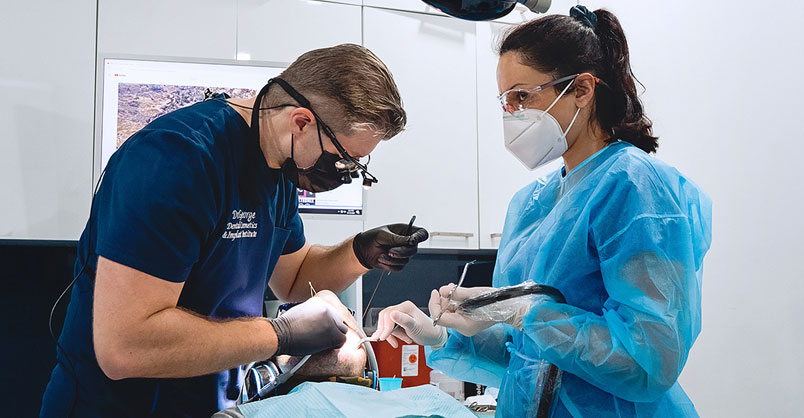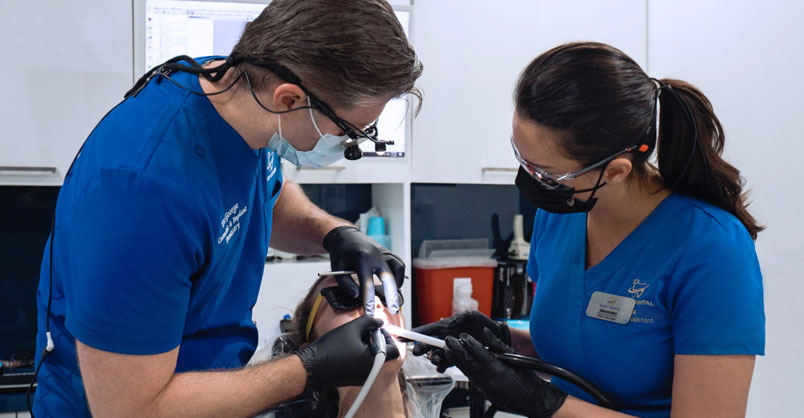Which Porcelain Or Ceramic Vanners Suit You, And How Are They Different?
Dental veneers are tooth-like coverings that permanently replace lost, damaged, or unsightly teeth. And while many types of veneers exist, ceramic and porcelain are the two most common. If you are considering veneers, what is the difference between ceramic veneers vs porcelain? Is one better than the other, and if so, which? This article will help you determine which vanners are better for you.
What Are Ceramic veneers?
Ceramic veneers are fragile composite resin shells that resemble teeth. Dental cement comes in the form of composite resin. Dental composites are produced by manufacturers using polymers.
Because ceramic veneers are unique, they are frequently called "no-prep" veneers. The majority of ceramic veneers don't require any underlying tooth damage. Instead, these shells are affixed to the tooth beneath.

Patients may be able to take out their ceramic veneers under certain situations. Additionally, they give a custom-like fit and replicate the appearance of your natural teeth because they fit directly over your existing teeth.
What Are Porcelain Vanners?
Porcelain is used to make porcelain veneers. Ironically, porcelain belongs to the ceramic family as well. Instead of using polymers, producers use clay and stone to create dental porcelain.
This substance resembles teeth even more than a ceramic made of polymers. Because porcelain has some transparency, light can reach the tooth underneath. This makes it possible for a smile to look incredibly natural.
Properties of Porcelain Vanners
Beauty and organic appearance
A veneer's transparency, or capacity to let light through, is one of its essential characteristics. This is a crucial element that allows the surfaces to reflect light in a way that is similar to that of natural teeth.
Toughness and durability
Compared to common resin composite or ceramic veneers, porcelain is a far more resilient material. These porcelain veneers have a 10–15 year lifespan, or even longer if cared for properly!
Large color selection
When getting veneers, you can pick the ideal shade of white that will look great on you regardless of your gender, age, or skin tone!
Damage and stain resistance
Not only is porcelain a highly durable material, but it is also practically impervious to stains. In particular, they resist external stains such as wine or coffee. Therefore, Your teeth will continue to look fantastic for years following your procedure!
Properties of Ceramic Vanners
Less preparation time:
Ceramic veneers are synthesized rather than milled. Less preparation and natural tooth contouring is required.

Selecting the color
You have the option to select the veneer's final color or shade. Your dentist will consider your desire for whiter teeth and recommend a shade that complements your natural teeth without being too light.
A long-term cosmetic fix
They are bonded onto the front surfaces of the teeth to permanently rectify and enhance the impression of teeth that are chipped, broken, or distorted.
Little preparation of the teeth
To allow them enough room to be affixed to the teeth, very little enamel needs to be removed. How the teeth are prepared, where the teeth are located, and the technology employed to get the desired effects can all affect the preparation.
Conclusion
Composite veneers are a quick, simple, and minimally invasive way to achieve the smile of your dreams. If you're younger and want to avoid committing to porcelain veneers, this option is affordable and reversible. They work incredibly well at fixing teeth chips and cracks. Surfside Dental offers a comfortable and modern clinic for all your dental needs. Getting composites might not be the best idea if you bite your nails frequently. The tendency can be problematic to kick, making your veneers more prone to chipping or cracking. To get more information, visit affordable veneers near me.
Comments
Post a Comment